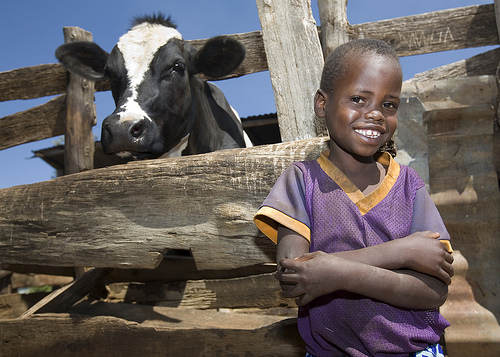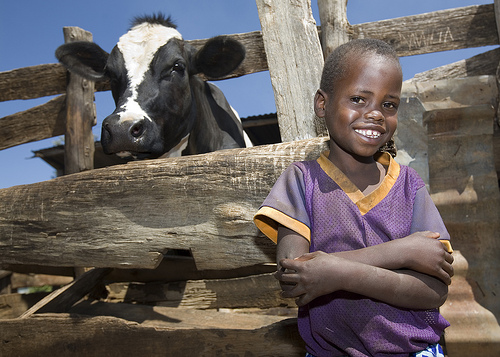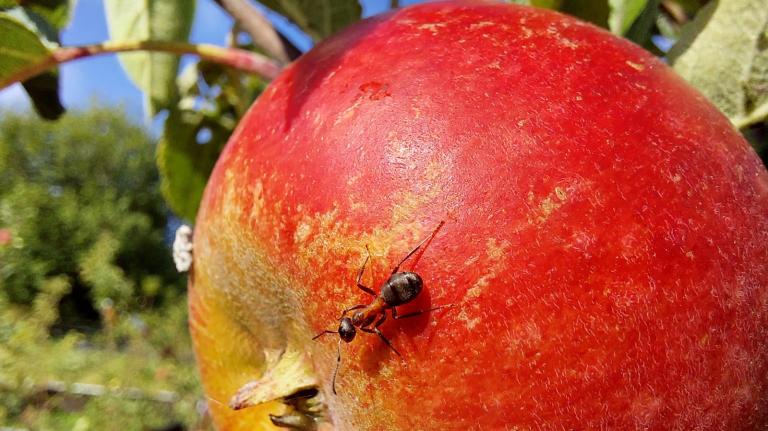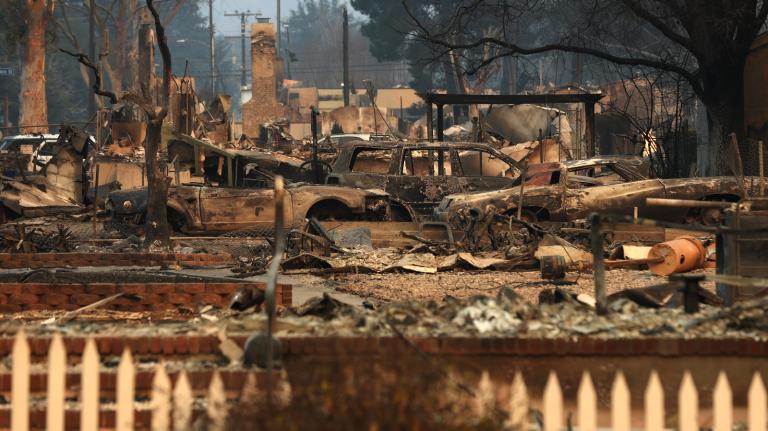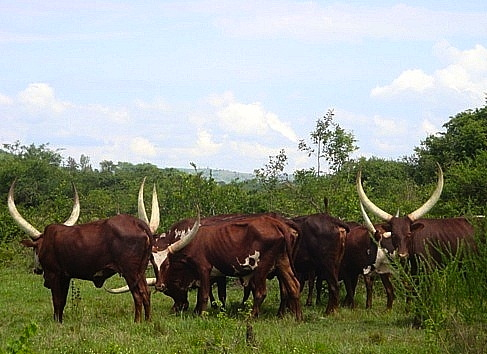 Ankole-Watutsi cows are quickly being replaced in Rwanda by high-producing breeds. While the latter are an important strategy to combat hunger, the author worries about the loss of a cultural icon, not to mention biodiversity.It’s the giving time of year again, and if you feel like everyone in your life already has too much stuff, aid programs like Heifer International offer a feel-good alternative. From the comfort of your home you can donate a farm animal to a family in the developing world, in a loved one’s name. These programs operate on the theory that livestock is a sustainable handout, providing milk, meat, fertilizer, and a potential income source.
Ankole-Watutsi cows are quickly being replaced in Rwanda by high-producing breeds. While the latter are an important strategy to combat hunger, the author worries about the loss of a cultural icon, not to mention biodiversity.It’s the giving time of year again, and if you feel like everyone in your life already has too much stuff, aid programs like Heifer International offer a feel-good alternative. From the comfort of your home you can donate a farm animal to a family in the developing world, in a loved one’s name. These programs operate on the theory that livestock is a sustainable handout, providing milk, meat, fertilizer, and a potential income source.
It’s a worthy concept, but here in Rwanda, where I’ve been living as an expat, it might be worth looking a gift cow in the mouth. The Rwandan government is giving the most vulnerable families free Friesian cows as part of a program called “One Cow Per Family.” And, considering that fact that well-fed Friesians can produce three times more milk than the indigenous longhorn Ankole-Watutsi breed, these cows can be lifesavers.
With chronic malnutrition rampant among Rwandan children, it can seem hard to make a case for the Ankoles — but this might be the best time to do so. Americans have only recently realized the importance of heritage animals (now that we’ve all but replaced most of them with high-producing monocultures). And we’ve learned that efficiency always comes with a price, namely: loss of biodiversity, cultural relevance, and flavor.
For Rwandans, the Ankole-Watutsi cows are often considered a national icon. Those I spoke to lit up when describing the breed, using words usually reserved for love sonnets. “The way you Americans like cars? We like our cows,” one Rwandan explained wistfully. With their exaggerated curved horns, chestnut coats, and noble humps, they are undeniably stunning. But for all their beauty, they’re simply not efficient. As grazers, they take up much more space than their stationary, grain- and hay-fed cousins. And, in a tiny, overpopulated country, there’s pressure on the government to, ahem … milk every cow for all it’s worth. Government policies favor intensification and make it difficult for pastoralists to continue grazing their animals; all around the country farmers are trading in their herds for the standard black and white variety.
Rwandans are still recovering from a recent, well-documented genocide, in which 800,000 people were massacred, and the decision to confine grazing animals touches a nerve for many there. Before colonization, before the wars, Rwandans were divided into castes by wealth, which was defined by number of cows. Tutsi were pastoralists with 10 or more head of cattle, Hutu were agriculturalists with 10 or less. The lines were clear but crossable, and not about ethnicity. A Hutu could become a Tutsi simply by acquiring a herd. But colonists deepened the divisions, pitting one group against the other in a divide-and-conquer tactic. Ninety percent of the national Ankole population was wiped out during the genocide in an attempt to extinguish the Tutsi cattle-rearing culture. Between wars, economic upheaval, and government-supported crossbreeding, these cows have been steadily going the way of Milking Devons and Belted Galways. Unlike other livestock breeds, which have been engineered into walking milk factories, Ankole cows are viewed as superfluous.
The reality, however, is that the 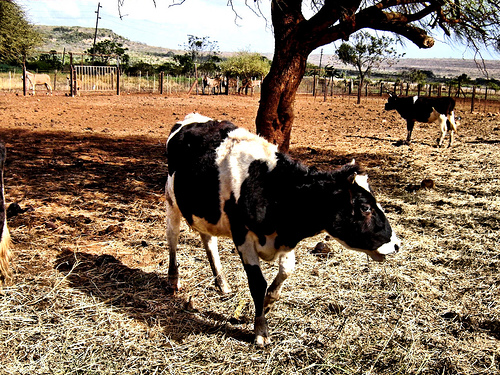 FriesiansPhoto: O.Taillon Friesians are the fussy, high-maintenance, and expensive cows to raise. And importing them into a country like Rwanda is simply perpetuating the nature-be-damned ideology that has cursed the developed world’s food systems. Friesians require enormous quantities of feed, expensive antibiotics, and even purified water just to survive in Rwanda, while the uniquely adapted Ankole can power through drought, parasites, and downright scruffy roughage. Their horns actually circulate blood, cooling it before it is returned to the body, which explains why they’re always the last cows standing when temperatures climb. And if we know anything, it’s that it’s not getting colder in Africa any time soon. So we may soon need Ankole cows and their horns more than we care to admit.
FriesiansPhoto: O.Taillon Friesians are the fussy, high-maintenance, and expensive cows to raise. And importing them into a country like Rwanda is simply perpetuating the nature-be-damned ideology that has cursed the developed world’s food systems. Friesians require enormous quantities of feed, expensive antibiotics, and even purified water just to survive in Rwanda, while the uniquely adapted Ankole can power through drought, parasites, and downright scruffy roughage. Their horns actually circulate blood, cooling it before it is returned to the body, which explains why they’re always the last cows standing when temperatures climb. And if we know anything, it’s that it’s not getting colder in Africa any time soon. So we may soon need Ankole cows and their horns more than we care to admit.
What anyone who comes to Rwanda can tell you — if they’re lucky enough to find and try it — is that Ankole milk is sweet, heavenly, and high in butterfat. It is a triple-crème waiting to happen, and, as one of the 5,000 or so cheese-deprived expats living in Rwanda, I can attest to the stable market that would exist here for a Rwandan-style brie. The nation is pushing tourism, and hotels are popping up around the capital city, Kigali, faster than they can be furnished. Those hotels serve foreigners who want locally produced food. A small Rwandan cheese industry would create jobs, and possibly an exportable product. The same goes for Ankole meat that is low in cholesterol, lean, and tasty. And the meat from their humps has a special fat with flavor characteristics similar to bacon. It’s a foodie’s holy grail.
Rather than recklessly replacing their livestock, Rwanda and other countries with indigenous livestock varieties would do well to lead the rest of the world by actually working with what they have. This is not a new concept. Projects like the Slow Food Ark of Taste and Heritage Foods USA rightly advocate for threatened breeds by encouraging us to eat them. For Rwanda, there is an even bigger opportunity to change the paradigm, create jobs, encourage cultural pride and tourism, and mitigate the threat of climate change. Plus: bacon from a cow? The world needs to pay attention.
